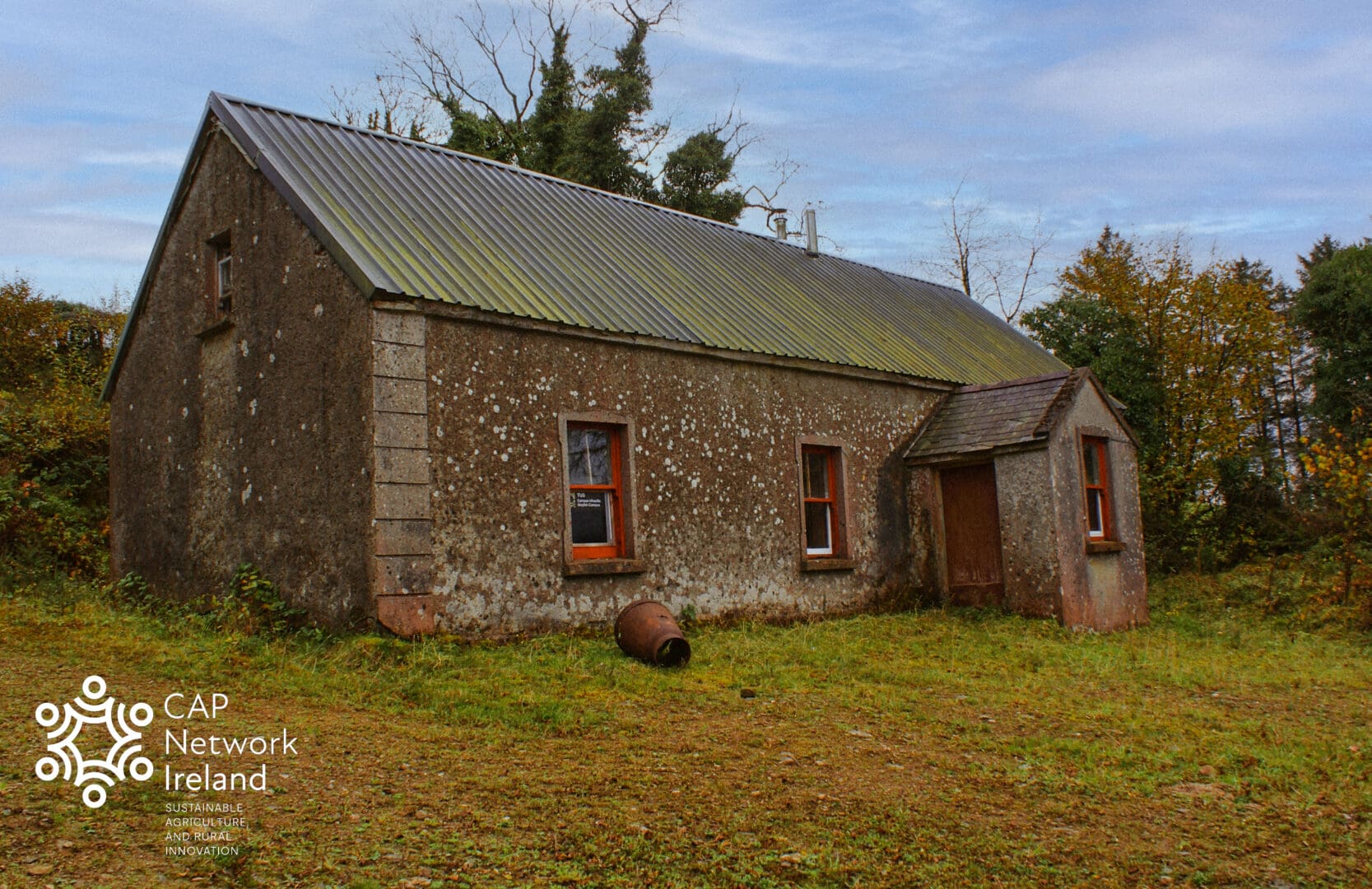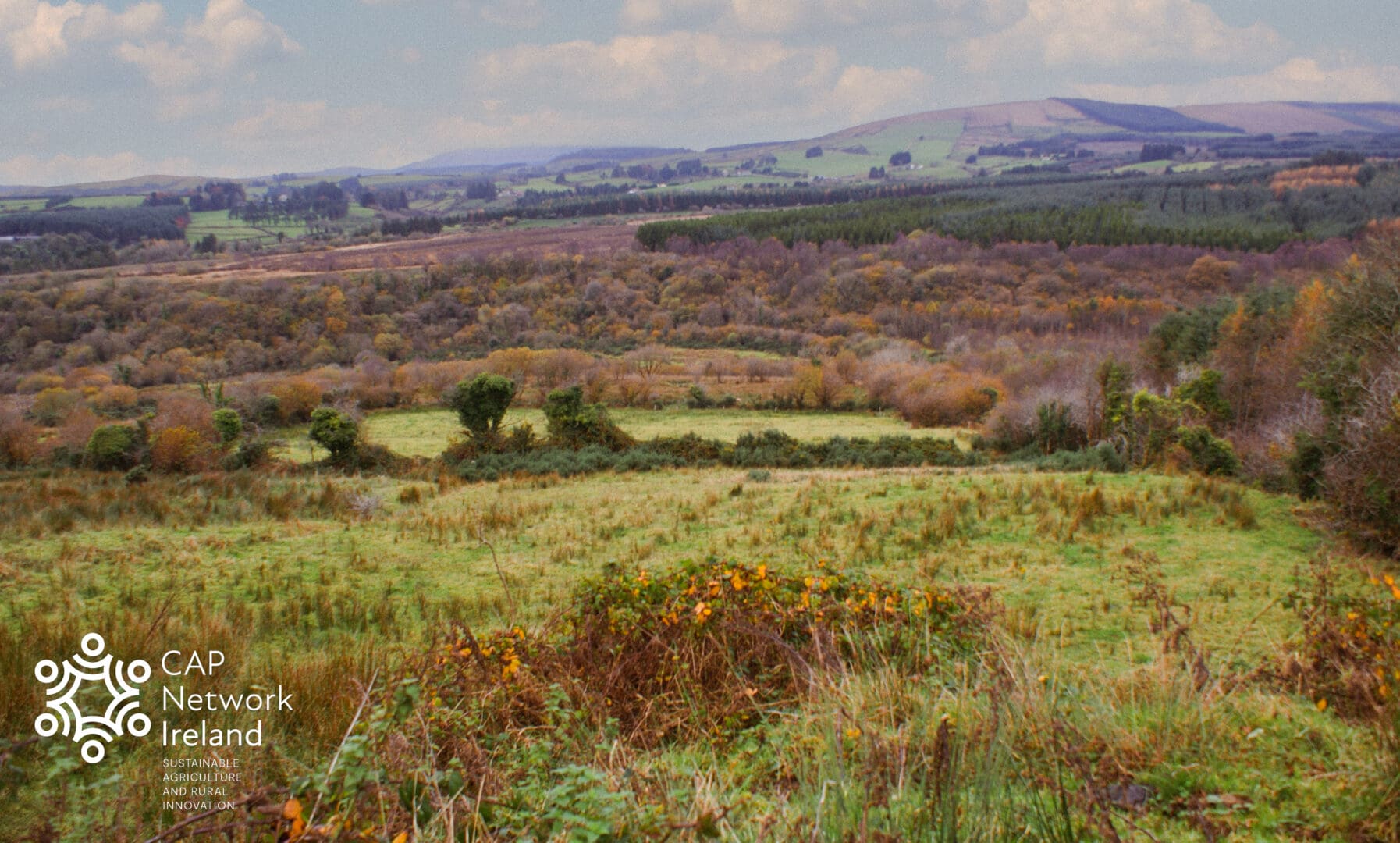Sustaining The Land For The Next Generation
1. Overview  2. Introduction  3. Buying The Farm  4. Investing in The Farm  5. Farming For The Love of it  6. Farming Alongside Nature  7. Keeping a Connection to The Land  8. Image Gallery

Name:
Jonathan and Mary Blackmore
Location:
Doon, Co. Limerick
Farm Type:
Upland Beef
Participating Schemes:
Farm Size:
12 ha (30 acres)
1. Overview of Jonathan and Mary Blackmore
Jonathan and Mary Blackmore are beef farmers working on the slopes of the Sliabh Feilim hills in Co. Limerick. They bought their farm 18 years ago and both have additional off farm incomes while they continue to meet their repayments. They were very much involved from the beginning in the original Hen Harrier project and are currently participating in ACRES Cooperation (CP).
2. Introduction
Jonathan is originally from a tillage farming background in Co. Wexford, but he took a journey in life that has brought him to a very different landscape and style of farming from where he began; rearing beef cattle on what he admits is marginal land. Back in the 1990’s, Jonathan moved to London to study Chartered Building Surveying. While there he met Mary.
Mary had grown up on a small livestock farm near Doon in Co. Limerick and had come to London to work after studying Social Science in University College Dublin. They eventually decided to return to Ireland and get married. Upon their return, both found employment with Limerick City Council and built the house they still live in today on a site with two acres of land given by Mary’s father.
They settled down to begin a family, but a desire to return to the land in a meaningful way grew. “We had our office jobs but we still wanted to have the kind of agricultural life that we enjoyed as kids growing up,†Jonathan remembers.

3. Buying The Farm
By 2005, Jonathan had his own successful chartered surveying business and was involved in various construction projects around Limerick city. Then, in 2007, an opportunity arose to buy 30 acres on an outside plot of land. They decided to buy it and planned for Mary to become the official farmer and stay at home raising their young family while Jonathan continued with his business.
Mary trained and became a qualified young farmer, and they began to build their herd. Working on the farm together, Mary mainly took care of the paperwork and Jonathan did the physical labour. “It was an idyllic idea but that didn’t really pan out for us,†says Jonathan, “the land that we bought was pretty poor and from a farm enterprise point of view it wasn’t really going to generate an income.â€
“Part-time farming is a real challenge, I think, in Ireland when you are working a full-time job because the main source of income has to take precendent.”
Their family eventually expanded to four children and life started to become hectic, so they decided to rent out the land for a while, with Mary eventually returning to work. “I did want to get into farming, the kids were small and it was a lovely way of life,†Mary remembers, “but when I looked at the basics of income and expenditure, I had a university qualification, money would come in week by week from a job in Limerick. So, while the kids were small, I went back to work. Part-time farming is a real challenge, I think, in Ireland when you are working a full-time job because the main source of income has to take precedent.â€
4. Investing in The Farm
In 2016, the Blackmores felt they were again in a position to focus on the farm, but a plan was needed because the farm had little infrastructure due to years of over wintering leaving the soil in a disturbed condition and a lack of fencing meant grazing management was difficult.
They applied to what was TAMS 2 under the Rural Development Programme (RDP) 2014 – 2020 for the construction of a three-column slatted shed in their home yard. “That revolutionised how we worked our 30 acres of marginal land.†says Jonathan, “it meant that I could bring down the cattle in the winter and spare the ground.†When the Covid lockdowns came into effect a few years later, they used the opportunity to install more fencing, enjoy the fresh air and let their children experience farming life. As a result, grass management has improved so significantly that 8 acres is now used to grow enough fodder to last the winter. Thanks to controlled grassland management, the first crop of silage was harvested from the farm in over 50 years in 2022.

“We saw the land as an asset and we saw the Hen Harrier as an asset, not as the kiss of death.”
“That was a huge boost to us,†says Jonathan, “and we couldn’t have done that without the Hen Harrier Project.†The presence of this protected species on their land meant that they were restricted in what they could do with the farm. Planting forestry, for example, was not an option. They decided to work with the reality of their situation rather than fight against it.
Mary credits Jonathan with having the vision to create a methodical plan for the farm and get involved with agri-environment initiatives such as the Hen Harrier project. “We were the first group of people to take it up. We did a lot of work with that project, and it changed the way we saw and used the land,†says Jonathan “we saw the land as an asset and we saw the Hen Harrier as an asset, not as the kiss of death.â€
5. Farming For The Love of it
The farm is modernising in a sustainable manner with 10 to 15 cattle being reared under this new management system and Jonathan recently upgraded his old David Brown tractor and bought a modern Kubota M108 to make life easier. He also bought an inexpensive slurry spreader to cut down on contractor bills. “Are we making money on this? No.†says Jonathan in answer to his own question about the farm. “We are still paying the (farm) mortgage. With everything that we do on the farm, from sales and everything else, every year we have to come up with 4 of the mortgage payments ourselves.â€
Mary is understandably looking forward to clearing the mortgage in the next few years, especially with children starting third level education, but she still enjoys farming life. “In the winter I’m interested in the cattle coming home because for 5 months they’ll be with us and the kids go up and down (to the shed),†she says. “I grew up on a small farm with animals and I was close to nature. I now work in the city in guidance counselling. A lot of our societal problems are a result of, I think, a disconnection between people and nature.â€

6. Farming Alongside Nature
They have now signed up to ACRES CP under the CAP Strategic Plan (CSP) 2023-2027 and it will be a significant boost for their farm finances. “This year when I signed up with ACRES, I said that this is going to be great: That €52,000 is going to be the making of us now. This is really going to bring this farm to where it can be. It’s really going to make it work when we put in all the (Non-Productive Investments) NPI’sâ€.
Jonathan and Mary were part of the cohort that experienced a delay in payments for scheme year 2023. “But hopefully this year ACRES will come into its own. I am very pro all these schemes where there is an input from us and then there is a measurable outcome. Anybody involved in the Hen Harrier project when they went into ACRES know the show and they are up for it. They know that they’ve got biodiversity (to protect) and their stewardship is not just agricultural. We have a different way of looking at our farming now; as an asset in terms of ecology and the environment. We are guardians of that and improving it.”
7. Keeping a Connection to The Land

“Maybe it’s ideological, maybe it’s genetic, maybe it’s cultural. I don’t know but it seems right to us.”
Mary admits that at times they have thought of selling the farm when finances were tight. “But we’ve managed to sustain it for the next generation so that they can have a connection to the earth under them. That sounds philosophical but that is my real feeling about it. We are just holders of it before we pass it on again. That is very important.†Jonathan agrees with Mary about the importance of a connection to the land. “No one in their right mind would do what we are doing,†he says, possibly only half joking, “But we’re doing it and there are other people like us doing it too. Maybe it’s ideological, maybe it’s genetic, maybe it’s cultural, I don’t know but it seems right to us.â€
The dedication of Jonathan and Mary Blackmore to their land is obvious. Their participation in various CSP 2023 – 2027 schemes will help them to continue living and farming in their rural community, while protecting local biodiversity, and producing high quality beef that we can all enjoy.
Learn more about ACRES and BISS by visiting our Schemes page.





